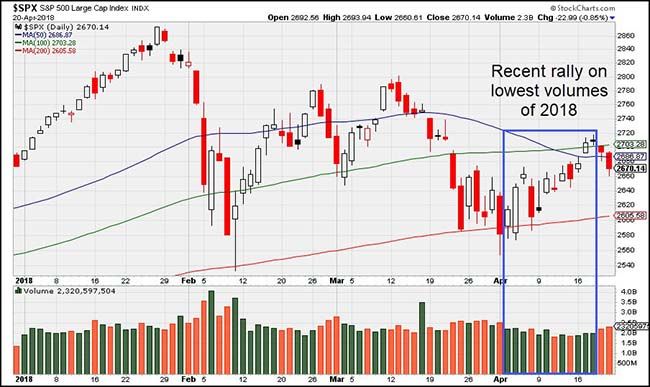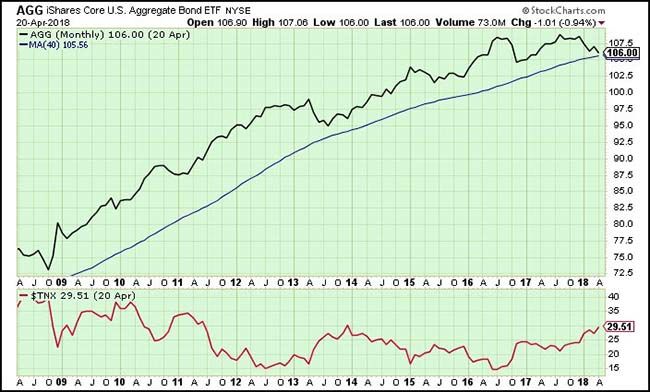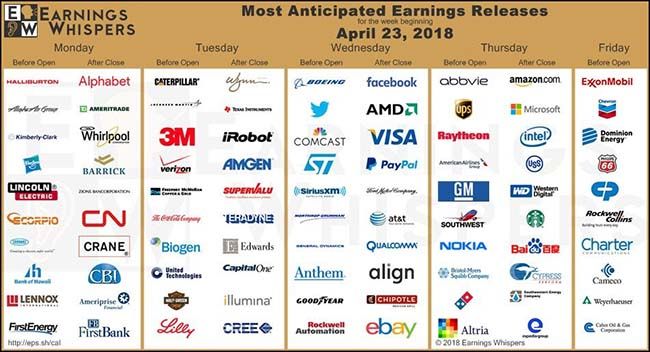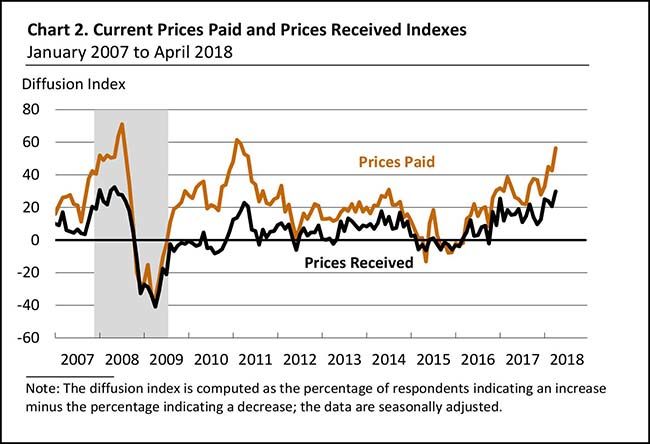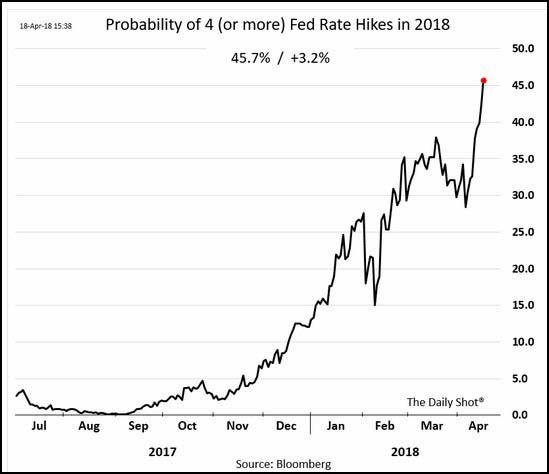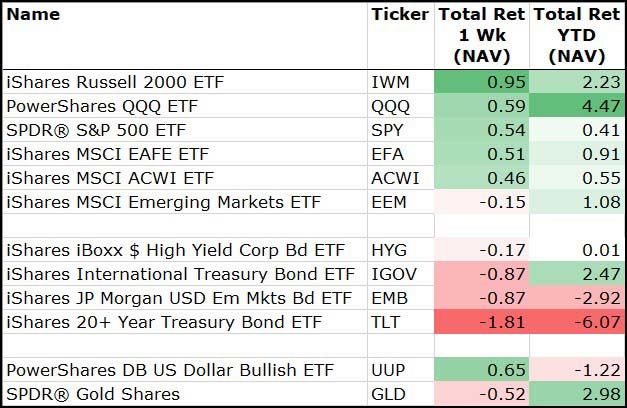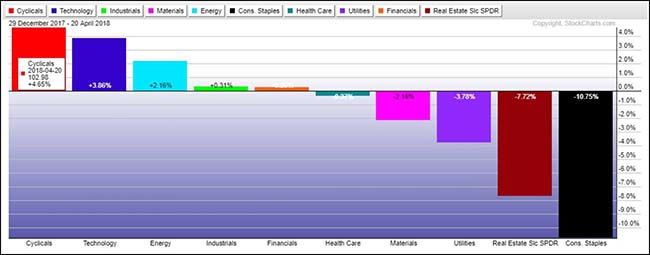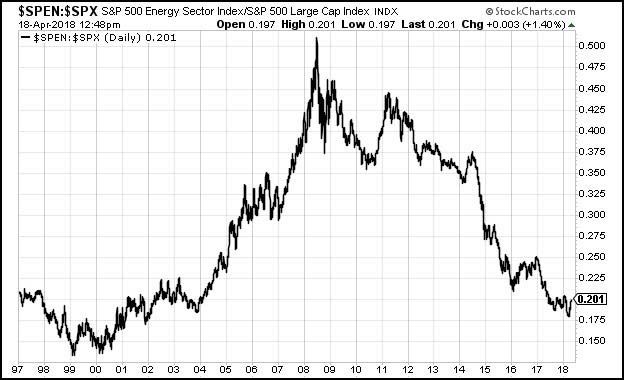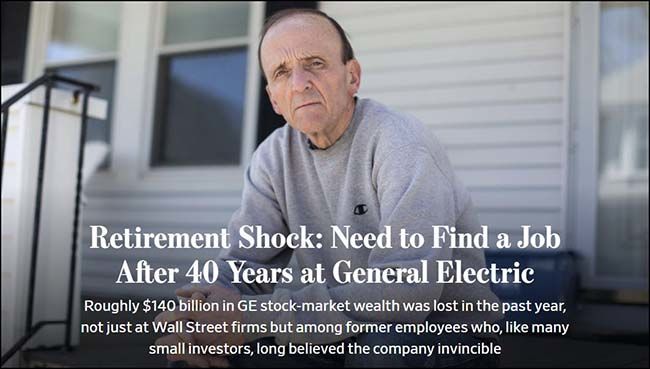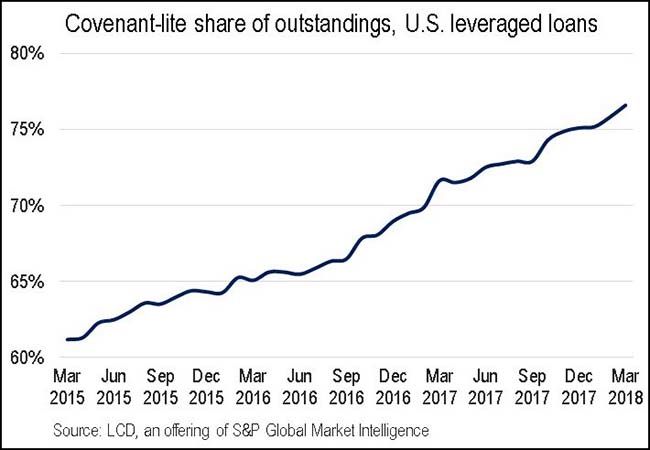by Blaine Rollins, CFA, 361 Capital
If you know me, or have worked with me, then you know that I love volume. Both in the financial markets and on my amplifier dial (yes, it does go to eleven). Show me a market with volume and I will believe the price. Show me a market without volume and I will picture three traders sitting on a curb pushing around prices. The February and March declines in the S&P 500 Index made me pay attention because it were attached to size selling. The recent two week, 6% bounce on the lowest volumes of the year did nothing to boost my confidence that we would be revisiting new highs anytime soon. If you want to get me to shift my cash hoard into new positions, show me some aggressive buying interest from the biggest money managers and investors. Instead, it looks as if the big money wants to sell U.S. stocks on the recent lift in prices.
Big money looks to be increasingly hesitant to go back to work as they watch commodity prices and inflationary pressures push interest rates higher. And some of the early earnings reports threw up some yellow flags as they were unable to get price increases to offset their raw material, transportation and wage pressures. This was especially notable in the consumer products sector last week which helped cause a -4% move in the sector’s valuation to now rank it as the worst performer of 2018. There were still some very attractive earnings to try and take advantage of, but it sure seemed more difficult to get rewarded on the beats than punished by the misses. So be patient. If the market refuses to reward, you might get your lower entry price in the future. This is not a time to try and be a hero in the U.S. equity space.
To receive this weekly briefing directly to your inbox, subscribe now.
As bond yields look to break their psychological highs, the major U.S. bond index proxy is setting a new 52-week low…
The AGG ETF now logs a negative total return for all short-term time frames…
I wonder if this will begin to mess with investors’ heads as they look to protect capital in the future. If U.S. stocks and bonds are both losing money then what buckets will take assets?
It was a big earnings week. Netflix found both price and volume growth to send its stock to all-time new highs…
Netflix Inc. used to worry it would alienate customers by raising prices for its streaming service. Not any more.
The company posted its strongest first quarter since going public 16 years ago, despite raising prices for most of its customers over the past several months. Los Gatos, California-based Netflix added 7.41 million users in the period, according to a statement Monday, easily topping analysts’ projections.
American Express also accelerated their top line sending their shares to new all-time highs…
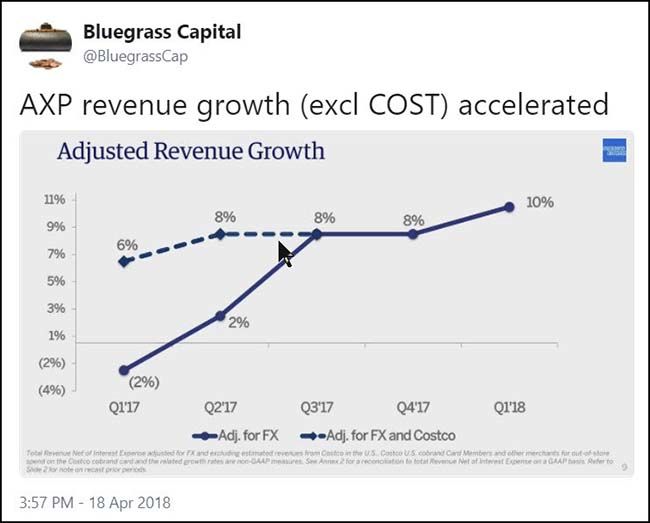
On the other side of the coin, there was Unilever…
Their problems were similar to other consumer product companies which cannot get pricing at the top line as consumers shift brand loyalty because of Amazon or new competition. And without price increases, the Consumer Staples companies are getting killed by transportation and raw material cost increases.
Growth skewed a little more toward volumes than we had anticipated, with a contribution from price/mix of just 0.1%, which underlines the inability of manufacturers in commoditized categories to pass through pricing in the current environment.
(Morningstar)
Same at P&G where a lower tax rate and weak U.S. Dollar are the main items keeping the bottom line strong…
Still P&G has less room to keep cutting prices while maintaining marketing outlays, especially with commodity and transportation costs on the rise. The saving grace for P&G is a lower tax rate and a weaker dollar, helping prop up margins. Profits for key competitors such as Unilever, L’Oreal and Henkel are being squeezed by a stronger euro without the benefit of the U.S. corporate tax cut.
Moeller said he expects pricing to be negative again this quarter, but that it should start going up again sometime in the fiscal year that starts July 1. Analysts on P&G’s earning call expressed skepticism, noting that pricing has been soft for many quarters.
P&G’s main price cuts were from a big reduction in Gillette razor prices a year ago. But P&G Thursday also pointed to lower prices or increased promotion in categories that included diapers, paper towels, toilet paper, hair care and toothpaste. That included rolling back last year’s list price increase on toothpaste.
This week will be peak earnings week as 200 S&P 500 companies report. Have fun!
(@eWhispers)
As rising prices accelerate through company earnings, they are also doing the same with the monthly economic data…
The rising inflation data points are now beginning to catch up with expectations for Fed Funds rate increases…
Investors this week sharply increased their expectations that the Federal Reserve will raise interest rates three or possibly four times this year, even as yields on long-term bonds showed concerns about growth. The mixed message from the markets suggests investors increasingly believe that the US central bank will move aggressively to tamp down inflationary pressures, but are worried that the longer-term implications could be counter-productive. “You have this tug of war with the Fed trying to match policy to rising inflation expectations without taking the wind out of the sails of the economy,” said Charlie Ripley, senior investment strategist at Allianz Investment Management.
Last week the equity markets continued their float higher while bonds fell lower…
Among sectors, rising oil prices helped the Energy sector while earnings worries hurt Apple, Semis and Consumer Staples…
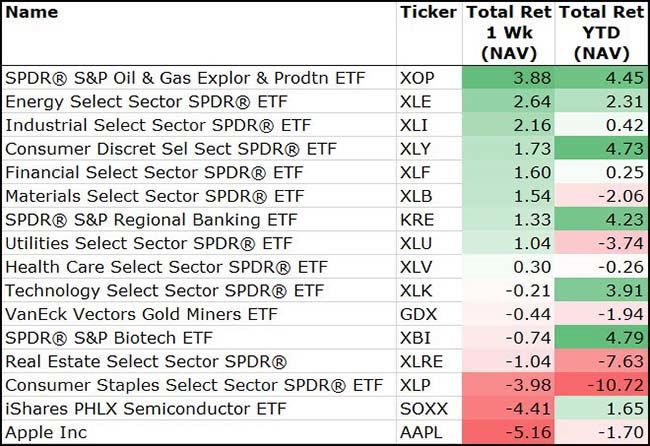
(4/20/2018)
Defensive markets typically benefit the Staples, REITs and Utility sectors. But not this year…
Speaking of sectors, you couldn’t get me to own a home builder stock right now…
Rising wages, big increases in raw material costs and now a breakout in mortgage rates are causing a perfect storm for both home buyers and home builders.
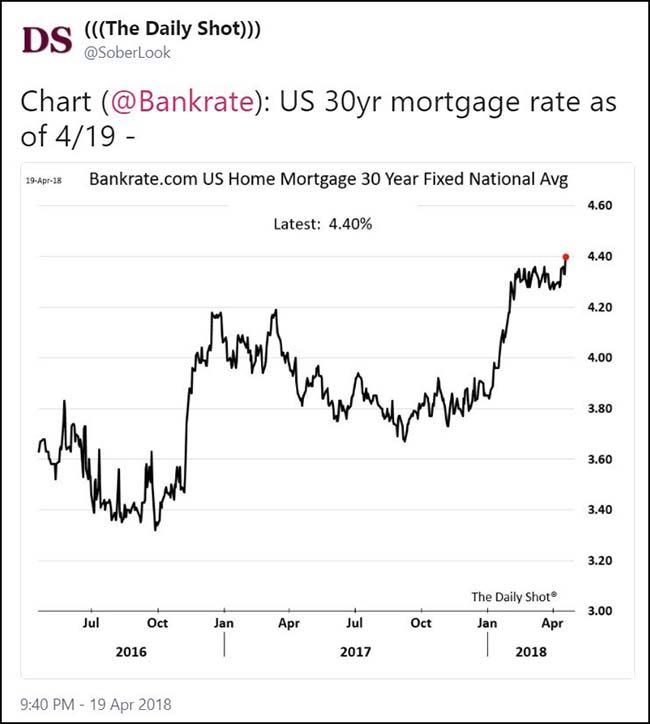
Energy stocks have underperformed the stock markets for a decade…
…Ned Davis thinks the group is ready for a turn higher…
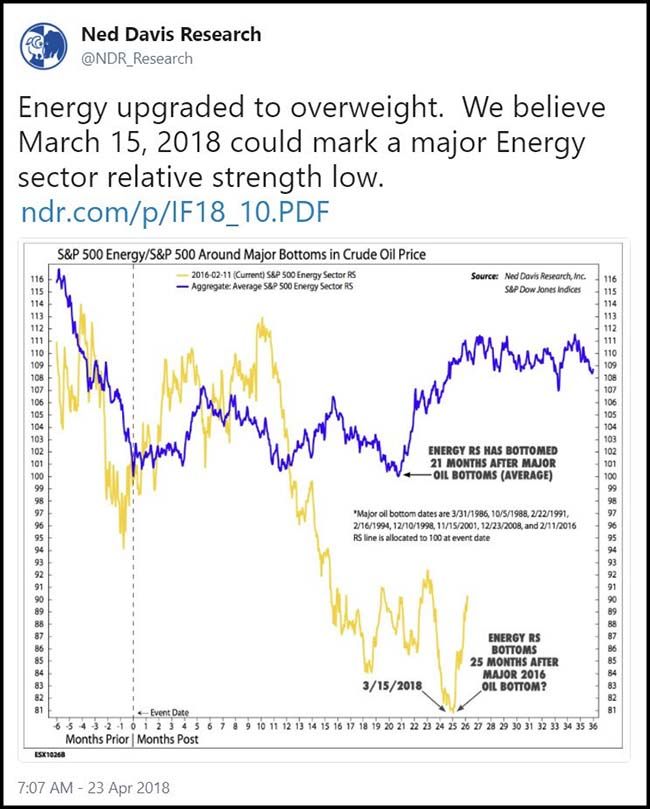
It is okay to put all your eggs in one basket when you are young. But once you have that 40th birthday, you had better diversify your savings and retirement assets into many buckets…
Gary Zabroski started working for General Electric Co. GE 0.48% in 1976, at an aviation factory in his hometown of Lynn, Mass. The job paid well, came with benefits and, for Mr. Zabroski, provided a career ladder for a man with a high- school education who started out cleaning toilets.
“You had a job for life if you had gotten in there,” said Mr. Zabroski, 61 years old. He rose to punch-press operator and retired in 2016, after working 40 years at the century-old plant, which roared to life during World War II and still churns out engines for jets and helicopters. He left GE with an annual pension of $85,000 and company stock valued at more than $280,000.
Retirement looked pretty good until GE shares collapsed. His shares are now worth about $110,000, prompting a late-life job hunt. “I never planned on retiring and having to go back to work,” said Mr. Zabroski, who has monthly mortgage payments and supports a partially disabled wife. “It’s kind of scary.”
Something else investors need to stop doing, is allowing companies to issue debt with easier terms. It is now time to tighten terms.
There are 4,000+ job openings for programmers/software engineers in Denver…
I know because we are in the market. Unfortunately, the pool of available talent is small. So our State has decided to advertise in the Bay Area. And for those who don’t code, “!=” means “not equal to”.
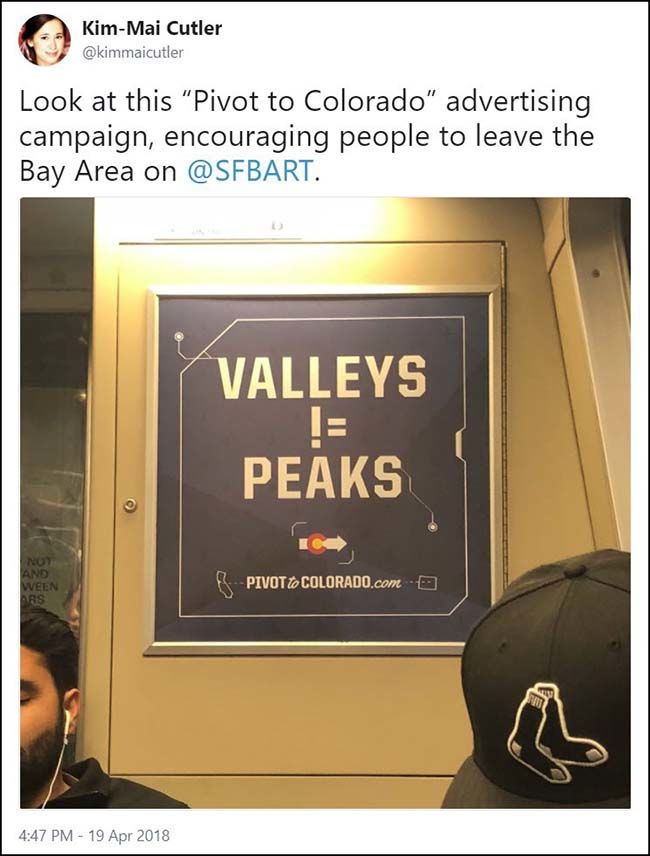
Looks like Colorado is not the only one advertising for tech jobs in the Valley…

Who doesn’t love Elon Musk’s ideas to improve productivity…
- Btw, here are a few productivity recommendations:
– Excessive meetings are the blight of big companies and almost always get worse over time. Please get rid of all large meetings, unless you’re certain they are providing value to the whole audience, in which case keep them very short.
– Also get rid of frequent meetings, unless you are dealing with an extremely urgent matter. Meeting frequency should drop rapidly once the urgent matter is resolved.
– Walk out of a meeting or drop off a call as soon as it is obvious you aren’t adding value. It is not rude to leave, it is rude to make someone stay and waste their time.
– Don’t use acronyms or nonsense words for objects, software or processes at Tesla. In general, anything that requires an explanation inhibits communication. We don’t want people to have to memorize a glossary just to function at Tesla.
– Communication should travel via the shortest path necessary to get the job done, not through the “chain of command”. Any manager who attempts to enforce chain of command communication will soon find themselves working elsewhere.
– A major source of issues is poor communication between depts. The way to solve this is allow free flow of information between all levels. If, in order to get something done between depts, an individual contributor has to talk to their manager, who talks to a director, who talks to a VP, who talks to another VP, who talks to a director, who talks to a manager, who talks to someone doing the actual work, then super dumb things will happen. It must be ok for people to talk directly and just make the right thing happen.
– In general, always pick common sense as your guide. If following a “company rule” is obviously ridiculous in a particular situation, such that it would make for a great Dilbert cartoon, then the rule should change.
“You buy a hat like this, I bet you get a free bowl of soup.”
Thank you Wall Street Journal for taking me back to the teenage years and my most watched movie of all-time.
Standing next to a bed of fluffy white mums near the club’s first tee, Carl chokes up on the grass whip like a golf club. His mouth twisted into a silly-putty smirk, he lines up next to the first row of flowers, waggles his hips and begins his color commentary, in the familiar cadences of a TV golf announcer: “What an incredible Cinderella story. This unknown, comes out of nowhere to lead the pack at Augusta. He’s on his final hole. He’s about 455 yards away. He’s gonna hit about a two iron, I think….”
Carl takes a leisurely backswing and then, swoosh—lops the head off the mum. Petals explode like confetti and fly everywhere. “Oh, he got all of that! The crowd is on its feet here at Augusta. The normally reserved Augusta crowd going wild…for this young Cinderella.”
The whole scene only lasts for a minute and a half. And though it may not have felt like history in the making at the time, that’s exactly what it was. Set at a lily-white citadel of manicured fairways and snooty entitlement, “Caddyshack” is a timeless slobs-vs.-snobs satire, but it was also something new and not entirely respectable in movies: the first full-blown incursion of the crazy world of improvisational comedy. Hollywood has never looked back

(Warner Brothers/Everett Collection)
Finally, congrats to all the students and parents who made it through the college admissions gauntlet for 2018…
It was my first time to this rodeo and I learned much. A very exciting time for my daughter and the entire family. Already looking forward to the next college search a few years out.
Tuition-discount rates for first-time, full-time freshmen at private colleges hit a record 49.1% last year, compared with 38.6% a decade earlier. About one of every five dollars of financial aid that the private schools distribute goes to students who don’t demonstrate financial need, according to the National Association of College and University Business Officers.
A multibillion-dollar industry has sprung up to help schools figure out how much to give each student.
“It’s become much more data-driven,” said James Day, vice president and managing director of financial aid optimization services at EAB Global Inc., a consulting firm in Washington, D.C. that works with more than 1,200 schools, including about 140 on financial-aid strategy.
(WSJ)
Additional Insights:
[Chart] Managing Drawdown Risk: Win by not Losing
Copyright © 361 Capital






